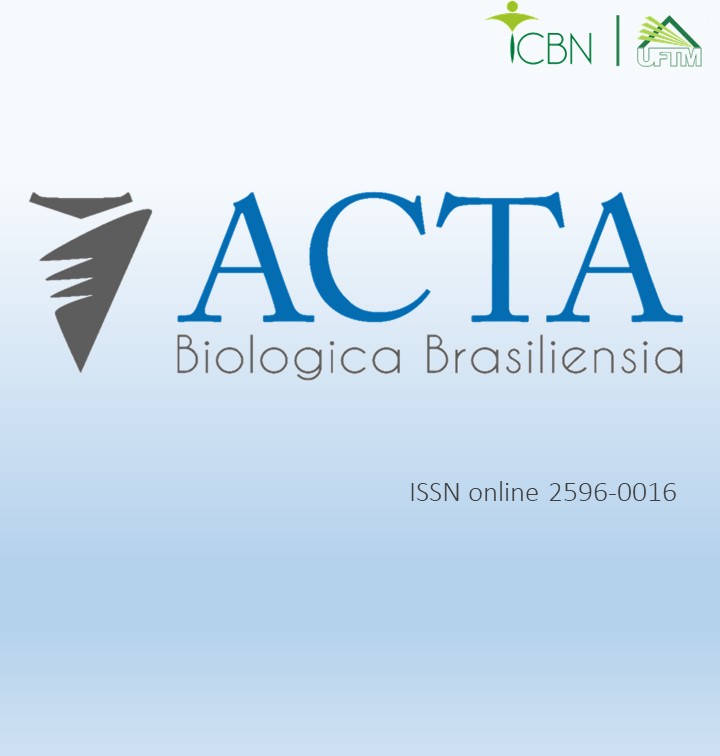FITOSSOCIOLOGIA E DIVERSIDADE DO COMPONENTE ARBUSTIVO-ARBÓREO DE UMA ÁREA DE RESERVA LEGAL DA CAATINGA
DOI:
https://doi.org/10.18554/acbiobras.v5i2.7226Palavras-chave:
Características edáficas, Fitossociologia, Uso do soloResumo
O objetivo deste estudo foi conhecer a fitossociologia e a diversidade taxonômica do componente arbustivo-arbóreo em uma reserva legal da Caatinga e avaliar a relação entre abundância das espécies com características edáficas. Realizou-se um levantamento fitossociológico, alocando-se 25 parcelas sistematizadas com área de 400m² cada. O critério de inclusão dos indivíduos avaliados nas parcelas foi a circunferência na altura do solo (CAS) ? 15,8 cm e altura (> 1,5 m). A comunidade arbórea da área de estudo foi analisada quanto a riqueza, abundância, composição, diversidade (através do índice de Shannon – H’) equabilidade (através do índice de Pielou – J’) e parâmetros fitossociológicos das espécies (área basal, densidade, frequência, dominância, valor de cobertura e valor de importância). Adicionalmente, dentro de cada parcela foram coletadas amostras de solo em duas profundidades (0-20cm e de 20-40cm) para mensuração em laboratório de 13 variáveis físico-químicas do solo. A relação entre a abundância das espécies e as variáveis edáficas das parcelas foi avaliada através de Análise de Redundância. Foram amostrados 570 indivíduos, distribuídos em 13 espécies, 13 gêneros e 6 famílias. As famílias mais representativas foram Euphorbiaceae e Fabaceae. Cenostigma microphyllum e Mimosa tenuiflora se destacaram como as espécies mais abundantes e frequentes, registradas em 92% e 96% das parcelas, respectivamente. Essas espécies predominaram em todos os parâmetros fitossociológicos analisados. O índice de diversidade registrado para a área de estudo foi considerado baixo (H’=1,79) comparado aos de outras áreas antropizadas de Caatinga, assim como o valor da equabilidade (J’=0,69). Os resultados de abundância, diversidade e equabilidade, associados aos resultados dos parâmetros fitossociológicos indicam dominância ecológica de C. microphyllum e M. tenuiflora. A abundância das espécies M. tenuiflora e Aspidosperma pyrifolium correlacionaram-se diretamente com as variáveis edáficas soma de bases e condutividade elétrica, enquanto que a abundância de Commiphora leptophloeos e Pseudobombax simplicifolium correlacionaram inversamente com essas variáveis. A abundância de Cnidoscolus quercifolius e Jatropha mutabilis correlacionaram-se negativamente com a variável areia.






